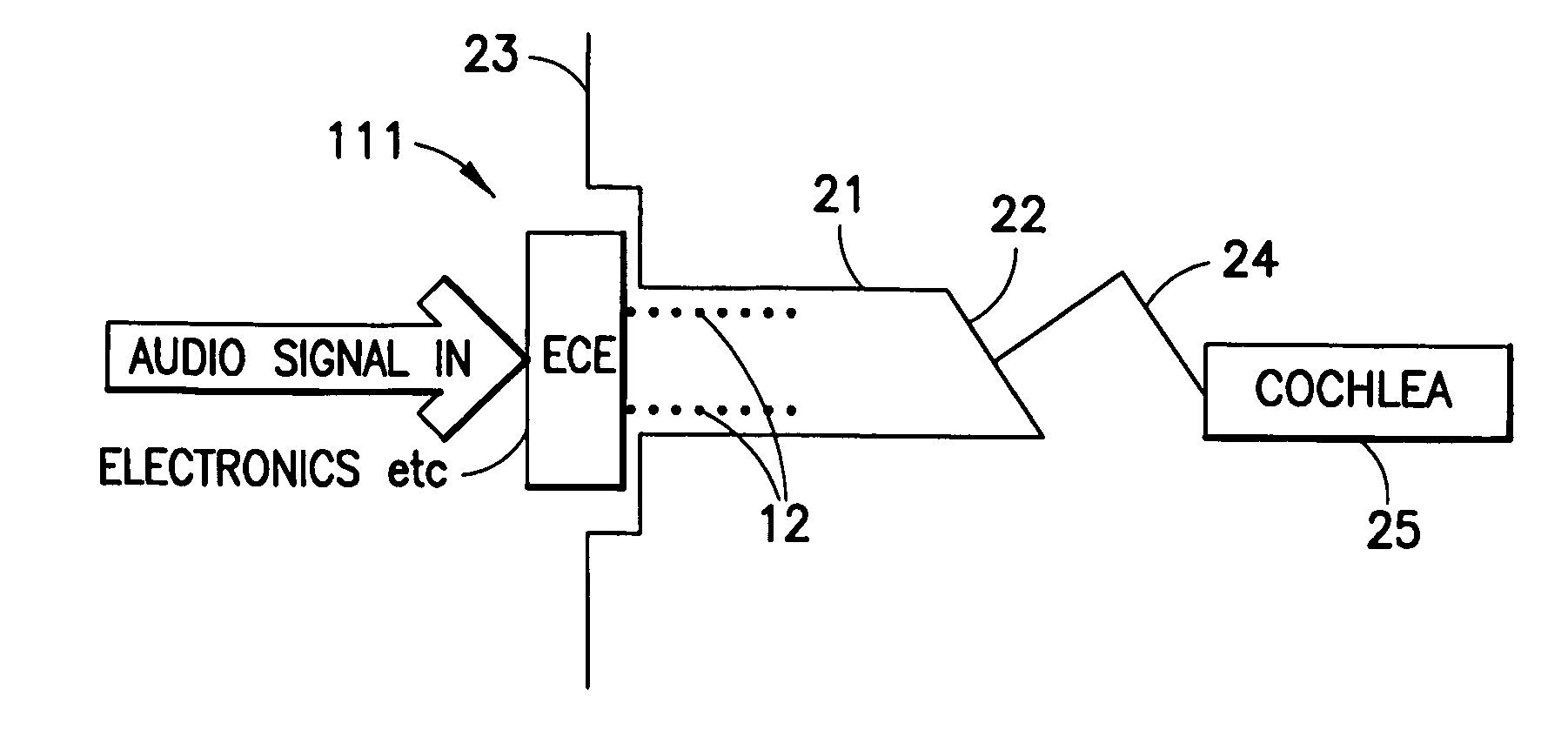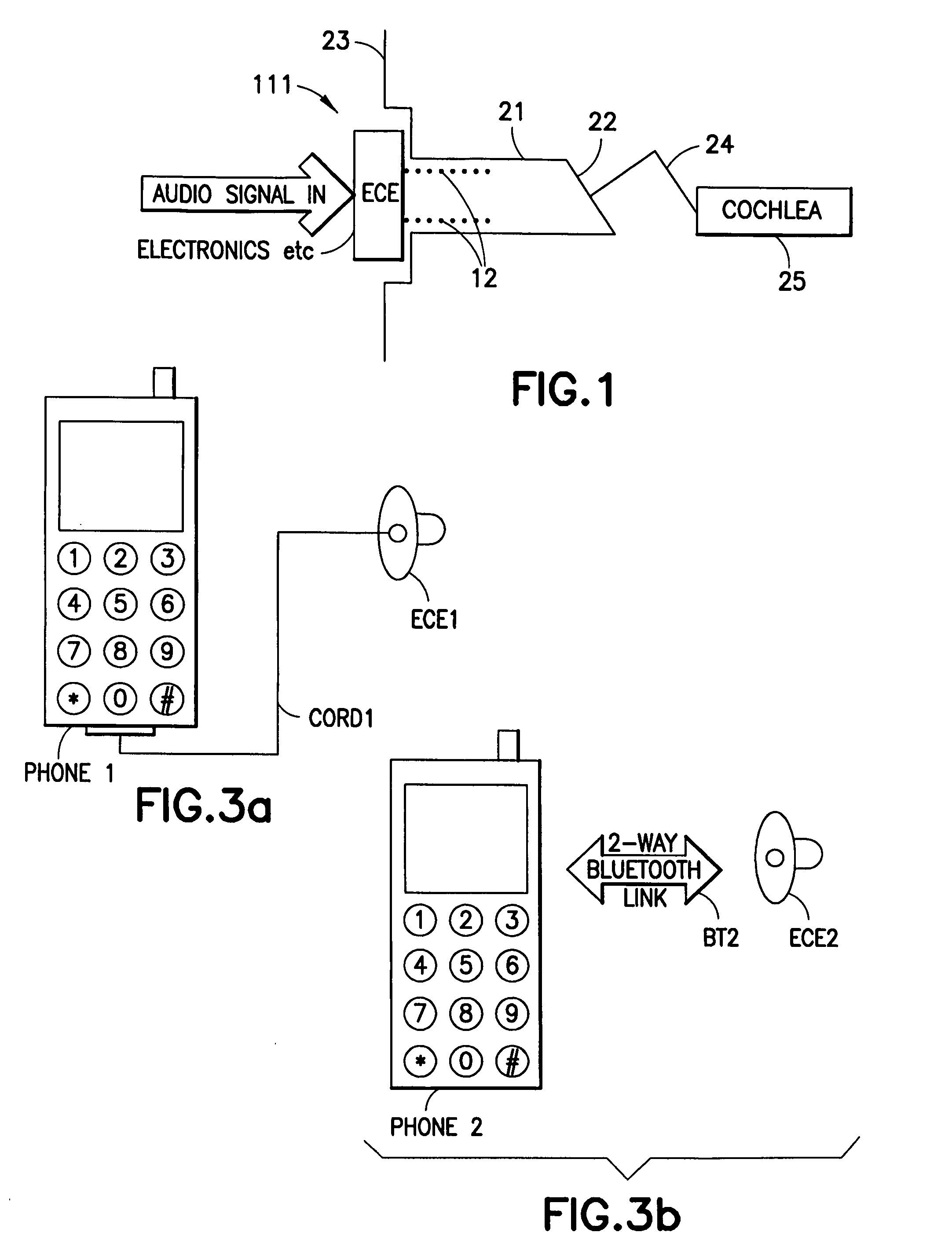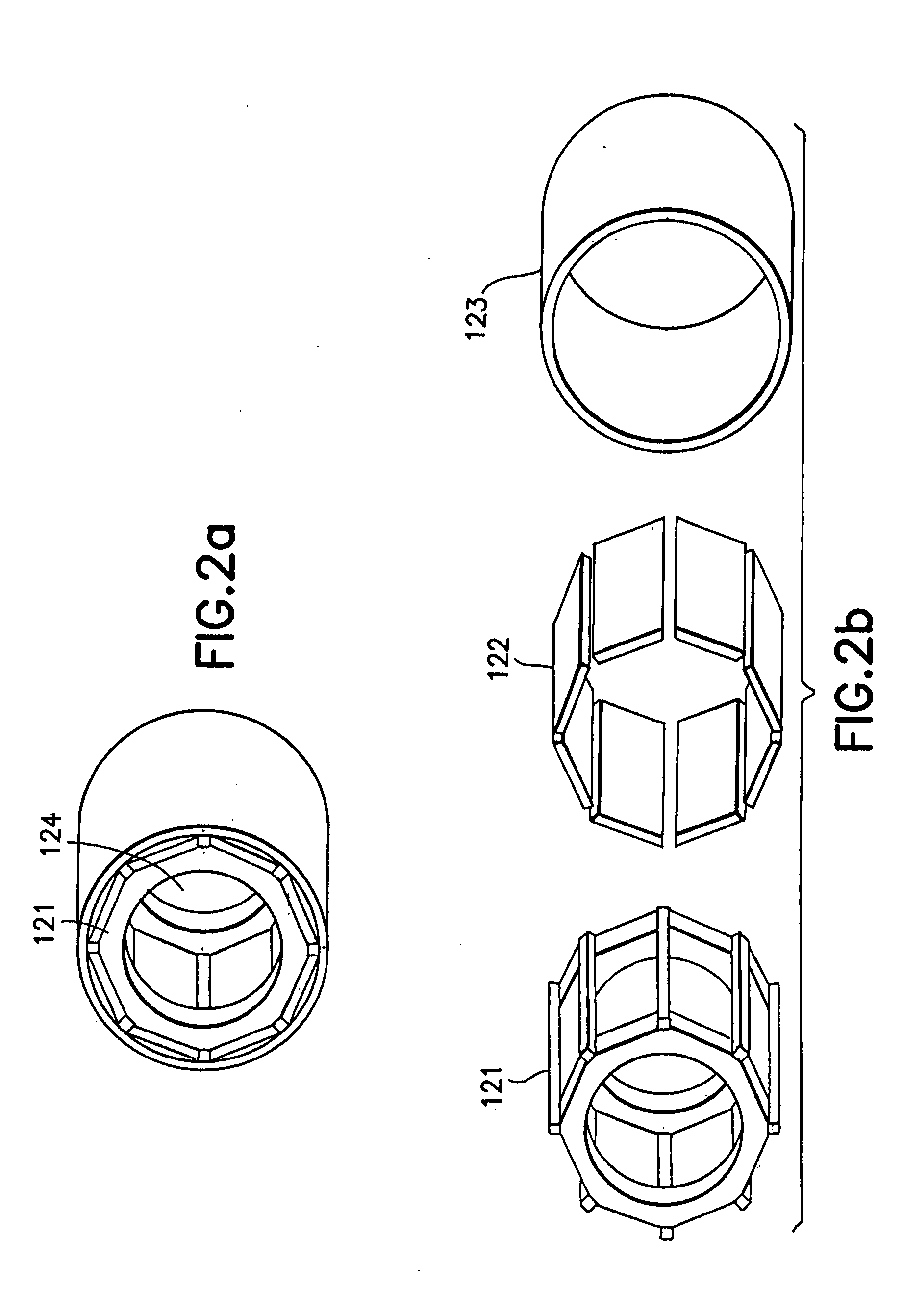Ear canal signal converting method, ear canal transducer and headset
a technology of converting method and converting method, which is applied in the direction of deaf-aid sets, earpiece/earphone attachments, electrical devices, etc., can solve the problems of low efficiency, relatively high power consumption, and adverse effects of headsets, and achieve good intelligibility. the effect of reducing essentially background nois
- Summary
- Abstract
- Description
- Claims
- Application Information
AI Technical Summary
Benefits of technology
Problems solved by technology
Method used
Image
Examples
Embodiment Construction
[0020]FIG. 1 shows a schematical view of an Ear Canal Exciter (ECE) headset 1 provided with an electronic unit 11 and an ear canal transducer 12 according to the present invention. An ear canal transducer according to the present invention has a form of a cylindrical (FIG. 2) earpiece adapted for insertion into the (external) ear canal 21 in the user's ear 2 (including further a tympanic membrane 22, pinna 23, ossicles 24 and cochlea 25) and adapted to contact the ear canal in order to excite the skin of the ear canal directly in order to produce tissue vibrations, thus transmitting the sound by conducting from a soft tissue in the outer ear canal into the tympanic membrane 22 and further to the sound sensing organs, and thus produce a sensation of hearing.
[0021] The transducer 12 is inserted to the ear canal 21 of the user, preferably at the mouth of tympanic canal, directly after the concha or at the interface of concha and tympanic canal. The transducer 12 has a cylindrical form...
PUM
 Login to View More
Login to View More Abstract
Description
Claims
Application Information
 Login to View More
Login to View More - R&D
- Intellectual Property
- Life Sciences
- Materials
- Tech Scout
- Unparalleled Data Quality
- Higher Quality Content
- 60% Fewer Hallucinations
Browse by: Latest US Patents, China's latest patents, Technical Efficacy Thesaurus, Application Domain, Technology Topic, Popular Technical Reports.
© 2025 PatSnap. All rights reserved.Legal|Privacy policy|Modern Slavery Act Transparency Statement|Sitemap|About US| Contact US: help@patsnap.com



